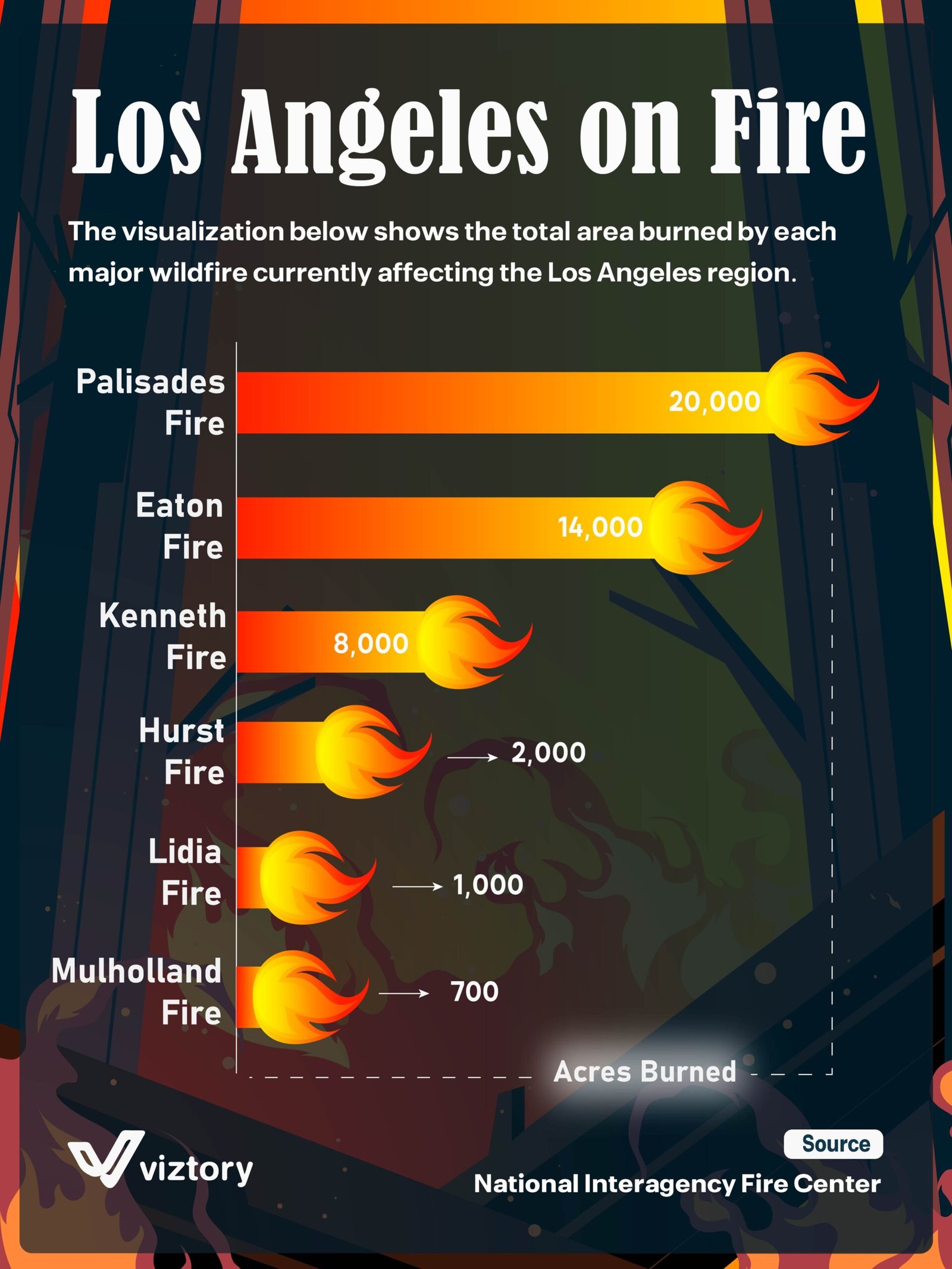Los Angeles on Fire
-
Jun, Sat, 2025
Wildfire Overview: Measuring the Impact
The data visualized breaks down the total acreage burned by each major wildfire in the region:
-
Palisades Fire: 20,000 acres
-
Eaton Fire: 14,000 acres
-
Kenneth Fire: 8,000 acres
-
Hurst Fire: 2,000 acres
-
Lidia Fire: 1,000 acres
-
Mulholland Fire: 700 acres
The Palisades and Eaton fires alone account for over 60% of the total burned area, intensifying pressure on firefighting resources and healthcare infrastructure alike.
Health Consequences of Wildfires
Respiratory Effects and Air Quality
Smoke and particulate matter from wildfires can travel hundreds of miles, drastically reducing air quality. Populations with pre-existing respiratory conditions such as asthma or COPD are at elevated risk, along with children and the elderly. Hospitals in affected areas often report spikes in ER visits during fire seasons, particularly for respiratory distress and cardiovascular issues.
Mental Health Strain
Evacuations, property loss, and uncertainty contribute to rising levels of stress, anxiety, and even post-traumatic stress disorder (PTSD). Healthcare providers often struggle to meet the growing psychological needs of fire-impacted communities.
Infrastructure, Access, and Strain on Services
Hospitals and clinics near fire zones frequently face logistical challenges. Roads may be blocked, staff may be unable to reach facilities, and evacuation zones might include critical care patients. Additionally, smoke can infiltrate indoor systems, putting both staff and non-mobile patients at risk.
Emergency response coordination becomes vital—not only to manage fire suppression but to protect vulnerable populations in need of ongoing care, such as dialysis patients, those on oxygen, and individuals requiring medications kept at controlled temperatures.
Broader Healthcare Preparedness
The recurring nature of wildfires signals the need for a systemic healthcare response strategy:
-
Mobile health units should be pre-positioned near high-risk zones.
-
Real-time air quality monitoring must be integrated into local hospital alert systems.
-
Telemedicine infrastructure can ensure care continuity when physical access is restricted.
By linking environmental emergencies to healthcare delivery, city planners and health authorities can better prepare for long-term public health resilience.
Conclusion
The graphic titled “Los Angeles on Fire” is more than a map of destruction—it’s a visual cue to the invisible crisis unfolding alongside the flames. The healthcare system, though often overlooked in fire response planning, is a critical line of defense. To safeguard human life, investments in climate-resilient healthcare infrastructure must go hand in hand with environmental mitigation strategies. In this era of intensifying natural disasters, healthcare must be at the heart of every emergency response blueprint.

